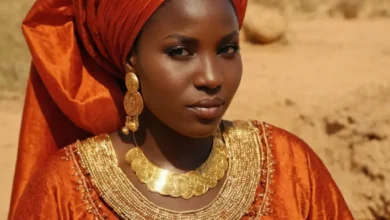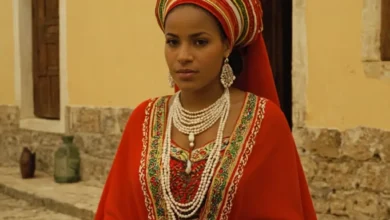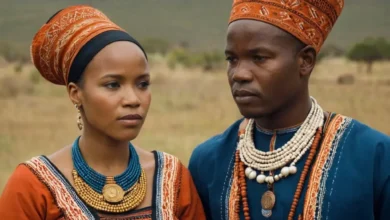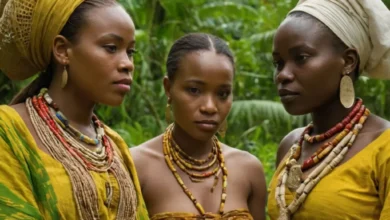Equatorial Guinean Traditional Clothing
Equatorial Guinea, a small nation nestled on the western coast of Central Africa, is a vibrant tapestry of diverse ethnicities and cultures. This rich heritage finds its vibrant expression in the traditional clothing of its people, offering a fascinating window into the nation’s history, beliefs, and social structures.
This article delves into the world of Equatorial Guinean traditional clothing, exploring its diverse styles, materials, symbolism, and the profound cultural significance it holds.
A Kaleidoscope of Styles: Exploring the Diverse Fabrics of Equatorial Guinea
Equatorial Guinea is home to a multitude of ethnic groups, each with its own unique cultural identity, reflected in their traditional clothing. The nation’s diverse geography, ranging from lush rainforests to coastal plains, has also shaped the styles and materials used in their attire.
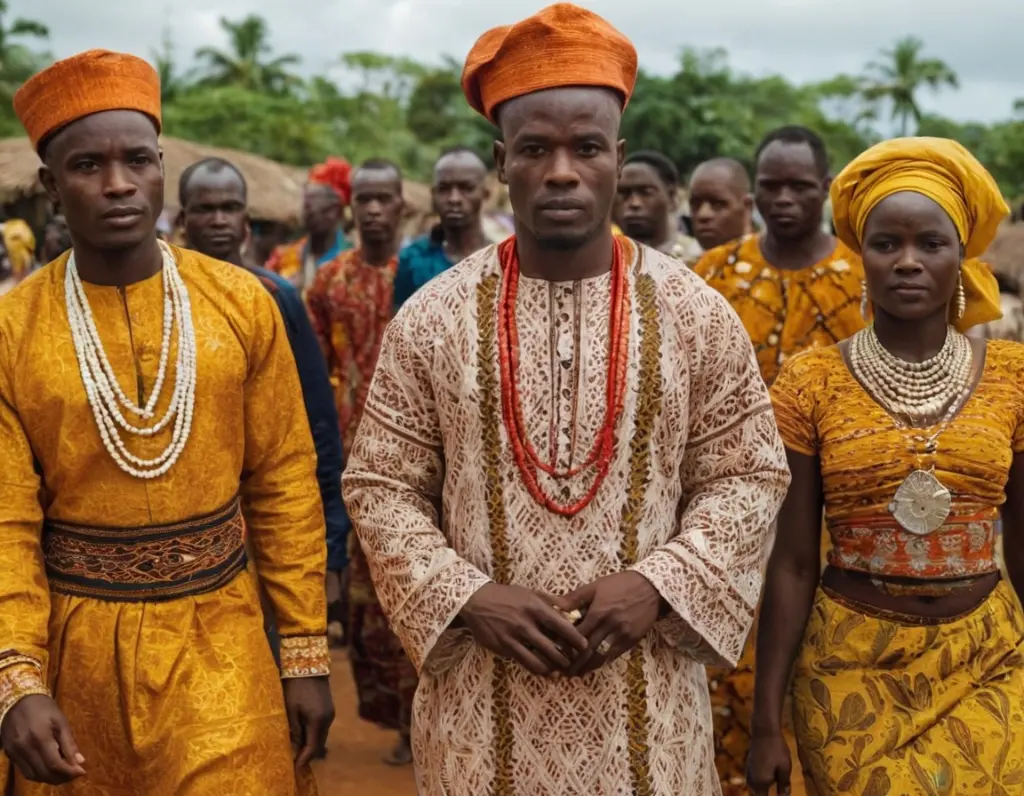
The Elegance of the Fang: Exquisite Weaving and Adornment
The Fang people, the largest ethnic group in Equatorial Guinea, are renowned for their exceptional craftsmanship and intricate weaving techniques. Their traditional clothing, known as the Ngombi, is characterized by its elegant simplicity. The Ngombi is often a single piece of fabric, expertly woven from raffia palm fibers, draped around the body.
See also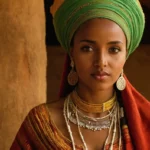 Ethiopian Traditional Clothing: A Rich History Woven in Threads
Ethiopian Traditional Clothing: A Rich History Woven in Threads
The fabric is meticulously hand-woven using traditional looms, creating a mesmerizing tapestry of textures and patterns. Adornment plays a crucial role in Fang attire, with intricate beadwork, shells, and metal ornaments embellishing the Ngombi, highlighting the individual’s social standing and status.
The Graceful Designs of the Bubi: Blending Tradition and Modernity
The Bubi people, primarily residing on Bioko Island, have a rich history of seafaring and a distinctive clothing style that reflects their maritime heritage. Their traditional attire, known as the Ibio, often consists of vibrant, hand-woven fabrics, adorned with intricate geometric designs and bold colors.
The Ibio is often a long, flowing robe, sometimes complemented by a head wrap or a brightly colored scarf. The Bubi have successfully blended traditional styles with contemporary influences, creating a unique fusion that celebrates their cultural heritage while adapting to modern trends.
The Vibrant Tapestry of the Ndowe: Expression of Identity Through Clothing
The Ndowe people, residing mainly in the mainland region, are known for their colorful and intricately patterned clothing. Their attire, typically consisting of a brightly colored, hand-woven fabric, is a testament to their artistic skills and creative expression. The fabric is often decorated with bold geometric patterns, animal motifs, and intricate embroidery, reflecting their unique cultural identity and rich traditions.
See also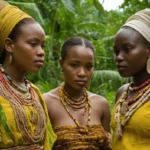 Gabonese Traditional Clothing: Reflecting Rainforest and Coastal Traditions
Gabonese Traditional Clothing: Reflecting Rainforest and Coastal Traditions
Beyond Aesthetics: Symbolic Meaning and Cultural Significance
Equatorial Guinean traditional clothing transcends mere aesthetics, serving as a powerful symbol of cultural identity, social status, and spiritual beliefs. Every stitch, every pattern, and every adornment carries a deep-rooted meaning, conveying messages that have been passed down through generations.
A Tale of Status: The Role of Decoration in Traditional Clothing
The ornamentation and embellishments adorning traditional attire serve as a visual language, conveying information about the wearer’s social status, lineage, and wealth. Beads, shells, metal ornaments, and intricate embroidery are not merely decorative elements but act as markers of social standing and achievement.
For example, the elaborate beadwork on a Fang woman’s Ngombi might indicate her family’s wealth and lineage, while the intricate patterns on a Bubi man’s robe might signify his skill as a fisherman or a warrior.
Celebrating Rites of Passage: Clothing as a Symbolic Marker of Life’s Milestones
Traditional clothing plays a significant role in marking life’s important transitions and milestones. Birth, initiation rites, marriage, and death are all celebrated through distinct attire, signifying the individual’s journey through life’s stages.
For instance, during a traditional Fang marriage ceremony, the bride might wear a Ngombi adorned with intricate beadwork, symbolizing her transition from maidenhood to matrimony. Similarly, Bubi young men might wear a specific type of headwrap during their initiation rites, signifying their entry into adulthood.
Spirits and Ancestors: Clothing as a Medium of Connection
The connection between traditional clothing and the spiritual world is profound in Equatorial Guinea. Certain patterns and motifs are believed to represent ancestral spirits or deities, acting as a conduit between the physical and the spiritual realm. For instance, the animal motifs found in Ndowe clothing are often associated with ancestral spirits, believed to offer protection and guidance.
Modern Trends: Preserving Heritage While Embracing Change
In the contemporary world, traditional clothing in Equatorial Guinea faces a constant challenge of balancing its cultural significance with the pressures of modernity. While some younger generations embrace Western fashion trends, there is a growing movement to preserve and revitalize their heritage through clothing.
The Rise of Contemporary Designers: Reimagining Traditional Patterns
A new generation of Equatorial Guinean designers is emerging, reinterpreting traditional patterns and styles to create contemporary designs. By blending traditional motifs with modern techniques, these designers are redefining the landscape of fashion in Equatorial Guinea, ensuring that their heritage remains vibrant and relevant in the 21st century.
Cultural Festivals and Events: Celebrating Heritage through Clothing
Cultural festivals and events play a crucial role in preserving and promoting traditional clothing. These celebrations provide a platform for showcasing the diverse styles and traditions of different ethnic groups. The vibrant colors, intricate designs, and rich symbolism of traditional clothing come alive during these events, fostering cultural appreciation and pride.
The Role of Education: Instilling a Sense of Pride in Cultural Heritage
Education plays a vital role in instilling a sense of pride in cultural heritage. By incorporating the study of traditional clothing and its symbolism into the curriculum, young generations can gain a deeper understanding and appreciation for their cultural roots. Educational initiatives can also provide opportunities for young people to engage in the creative process, learning traditional weaving techniques and crafts.
Frequently Asked Questions (FAQs)
What are the main types of materials used in Equatorial Guinean traditional clothing?
Equatorial Guinean traditional clothing is primarily crafted using natural materials sourced from the environment, such as raffia palm fibers, cotton, and bark cloth. The choice of materials varies depending on the ethnic group and the specific garment.
What are some of the common motifs found in Equatorial Guinean traditional clothing?
Common motifs include geometric patterns, animal motifs, and representations of nature, such as trees, rivers, and stars. These motifs often hold symbolic meanings related to ancestral spirits, natural phenomena, or social structures.
How has globalization impacted traditional clothing in Equatorial Guinea?
Globalization has introduced new fashion trends and influences, leading to a fusion of traditional and contemporary styles. While some younger generations embrace Western fashion, there is also a growing movement to preserve and revitalize traditional clothing.
Conclusion: A Legacy of Cultural Identity and Expression
Equatorial Guinean traditional clothing is a testament to the nation’s rich cultural heritage, showcasing the diversity, creativity, and resilience of its people. Each garment is a story, woven with threads of history, beliefs, and artistry. As the nation navigates the complexities of globalization, the preservation and revitalization of traditional clothing becomes a crucial endeavor, ensuring that the legacy of Equatorial Guinea’s cultural identity is passed on to future generations.
